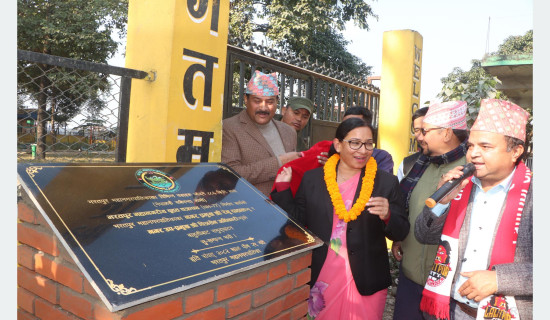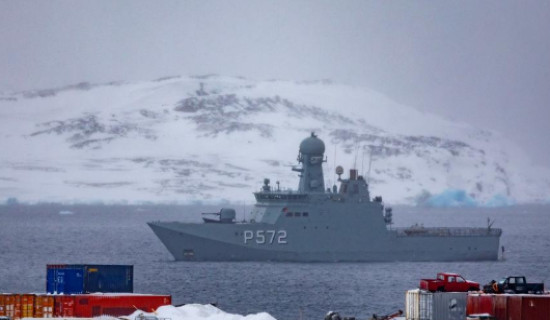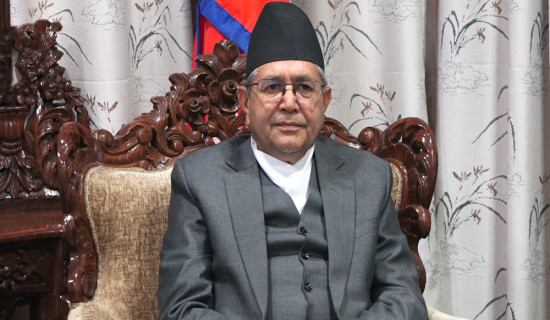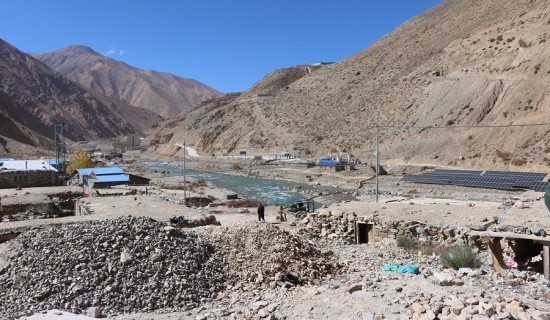- Tuesday, 13 January 2026
Significance of Mt Everest Day
 Dr Raju Adhikari and Engr. Ram Kumar
Shrestha
Dr Raju Adhikari and Engr. Ram Kumar
Shrestha
Mt Everest Day is celebrated in Nepal every year on May 29th to draw global attention to the significance of Mountains in mitigating climate impact. In Melbourne special event is organized on May 29th to honor Australian MT Everest climbers who made significant contributions to Save Himalayan Region campaign. Australia is a nation of great adventures and trekkers and is keen to support any movements for saving the Himalayan regions.
Following Radhanath Sikhdar, an Indian
mathematician working for the Great Trigonometrical Survey of India
confirmation in 1865, that Everest was the highest on the planet, the British
decided to name it after Colonel George Everest, the Survey’s former leader.
The Nepal government's proposed name Sagarmatha was casually undermined and dismissed
for political reasons at that time.
Monitoring
the Melting of the Himalayan glaciers along with Ocean and Air temperatures are
key indicators to know the impact of climate change. Nepal is home to nine of
the top ten peaks of the Himalayan region and MT Everest is the highest peak.
There is an estimation that over the last 30 years, the average temperature on Everest has risen at a
rate of approximately 0.2–0.3°C per decade,' says
climate scientist Tom Matthews of King's College, London, who installed weather
stations on the mountain. A phenomenon called elevation-dependent warming plays
a role.
As
elevation rises, air molecules spread apart due to decreased atmosphere and
temperature.
The impacts
of climate change in the Himalayas are real. Melting glaciers, unpredictable
weather conditions rainfall patterns, and temperature rise are impacting the
people and wildlife of the region. The Himalayan glaciers are the water towers of
Asia, and the source of many of the world's great rivers: The Yangtze, the
Ganges, the Indus, and the Mekong. Over a billion people depend directly on the
Himalayas for their survival, with over 500 million people in South Asia, and
another 450 million in China completely reliant on the health of this fragile
mountain landscape. Climate scientists
model how global heating will be amplified at high elevations. The combination
of strong winds and low humidity was shown to be driving significant snow and
ice loss, resulting in the peak shrinking by up to 90cm during the winter
months assuming no fresh snowfall. Between one-fifth and one-quarter of the
world’s population get their water from the Himalayas, so data such as this is
invaluable for understanding the impact of climate change on water resources.
Climate
change in the Himalayas poses a serious threat to the source of these great
rivers with dire and far-reaching impacts on biodiversity, food, water, and
energy security in Nepal and globally. It has been reported that low sea-level
vulnerable nations need to adapt to the changing climate for their future
survival.
The Literature reports Climate is warming (0.14 °C /decade) and Glaciers have been Melting (41 B ton, > 6.5%)
since 2000. Sea level has been rising- 6.5 inches since 1950 and Ocean surface temperature rise ~ 0.13°C /decade. Ozone is Depleting since 1970- 4%. Natural Disaster trends have increased (cyclones,
tornados, Floods) by>13% over the past 30 years. An
Intergovernmental Panel on Climate Change (IPCC) emphasizes Net-zero emissions
by 2050 and even then the temperature is likely to overshoot 1.5 degrees between
2041 and 2060.
Nepal National Climate
Change Policy 2019 Nepal endorsed the United
Nations Framework Convention on Climate Change (UNFCCC), efforts
to limit temperature rise to well below 2°C leading to 1.5°C and has ratified Paris Agreement 21. Nepal
contributes 0.027 % of total global emissions (0.29 tons CO2 per person
and Global circulation model
(GCM) projections indicate Nepal’s temp will increase with a mean of 1.4ºC by
2030.
Due to these impacts, Nepal faces losing 2.2%
of its annual GDP (30 B$) due to climate change by 2030. Minister
of Information and Communication Technology Sharma reminded recently that in
the 28th Conference on Climate Change, Prime Minister
Pushpa Kumar Dahal had presented Nepal's interests and concerns even though we
don't contribute to carbon production.
Nepal
is suffering from the problems caused by other industrialized countries and does not
get any compensation for them so less developed
countries including Nepal should benefit from the various funds established to
avoid and deal with the adverse effects of climate change, she said, She also
highlighted the need to push climate diplomacy as an important part of economic
diplomacy and said media would play an important role in creating the necessary
environment for this and in creating awareness among the general public by
focusing on risk knowledge and risk monitoring and data analysis, risk
information flow, capacity building, and countermeasures. Nepal government's
initiative to hold a global Sagarmatha summit is praiseworthy as it would help
draw the global attention and necessary resources to deal with the climate
impact and save Mt Everest.
Nepali
diaspora community organizations also organize events to raise awareness of
climate change impact in Nepal on May 29th. The Federation of
Nepalese Associations of Australia hosts a webinar on this day with experts in
the field and submit its feedback.
(Dr. Adhikari is Senior Scientist at The Commonwealth Scientific and
Industrial Research Organization (CSIRO) - an Australian Government agency
responsible for scientific research and Engr Shrestha is Lumbini-Kapilvastu
Global Campaign Global Coordinator and INAS Global Advisor.)
















